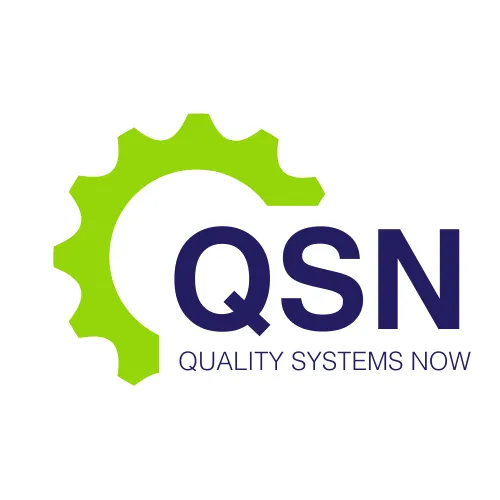NEWS

Public Feedback sought on updates to Good Manufacturing Practice (GMP) Guidelines
The Therapeutic Goods Administration (TGA) has opened public consultation on proposed updates to the Good Manufacturing Practice (GMP) guidelines that regulate the manufacture of therapeutic goods in Australia. As GMP and regulatory compliance specialists, Quality Systems Now recognises the significance of these proposed revisions for manufacturers, testing laboratories, and biotechnology companies. This article provides a detailed overview of the consultation, the rationale for the updates, proposed changes, implications for industry, and strategies for preparing submissions.
Background and Regulatory Framework
In Australia, the Pharmaceutical Inspection Co-operation Scheme (PIC/S) Guide to Good Manufacturing Practice for Medicinal Products forms the foundation of the manufacturing principles under the Therapeutic Goods Act 1989. The TGA regularly updates its adoption of the PIC/S Guide to align with international standards and evolving technologies in the pharmaceutical and biotechnology sectors.
The current Australian manufacturing principles are based on version PE009-17 of the PIC/S Guide, adopted in 2023. From September 2025, TGA inspections will reference this version in full. The move reflects Australia’s continued commitment to maintaining international harmonisation in the regulation of therapeutic goods. The revised guidance incorporates updated expectations for sterile product manufacturing, digital documentation, and risk management systems, ensuring that Australian manufacturers meet global quality standards.
Alongside this, the TGA has highlighted a major international consultation led by PIC/S in collaboration with the European Medicines Agency. The consultation seeks feedback from manufacturers, laboratories, regulators, and professional organisations on proposed amendments to several key GMP chapters and annexes, including new provisions related to artificial intelligence and digital systems. The consultation remains open for submissions until early October 2025.
Rationale for the Updates
The proposed revisions are driven by rapid technological advances across the pharmaceutical manufacturing landscape. Increasingly, production environments integrate automated systems, electronic documentation, real-time analytics, and artificial intelligence. While these technologies deliver efficiency and precision, they also introduce new risks and regulatory considerations that traditional GMP frameworks did not fully anticipate.
In particular, regulators have identified the need for clearer expectations around data integrity, algorithmic decision-making, system validation, and cybersecurity. The updated GMP guidelines aim to ensure that manufacturers using digital and AI-enabled systems maintain the same level of product quality, safety, and traceability as those using traditional systems. This initiative also aims to establish a harmonised global standard for the responsible use of AI in GMP environments.
Key Proposed Changes
Revised Chapter 4: Documentation
The first major area of change involves documentation requirements. Chapter 4 has been revised to explicitly address the management of electronic records and hybrid documentation systems. The updated text reinforces expectations for data traceability, audit trails, metadata management, and secure version control. It recognises the growing shift away from paper-based systems while ensuring that documentation remains consistent, attributable, legible, contemporaneous, original, and accurate. These principles are essential for maintaining the integrity of manufacturing and quality data in increasingly digital operations.
Revised Annex 11: Computerised Systems
The second area of focus is the revision of Annex 11, which governs the use of computerised systems in GMP environments. As modern manufacturing systems become interconnected and data-driven, Annex 11 has been expanded to include detailed expectations on system validation, change management, cybersecurity, and backup procedures. The revisions also highlight the need for manufacturers to establish clear roles and responsibilities for IT governance and to maintain robust oversight of third-party software providers and cloud-based systems. These updates are designed to ensure that the reliability and security of digital systems support the quality and consistency of therapeutic goods.
New Annex 22: Artificial Intelligence
The most significant addition is the proposed Annex 22, introducing a dedicated regulatory framework for artificial intelligence used in GMP environments. The annex outlines principles for risk assessment, model validation, ongoing performance monitoring, explainability of AI outputs, and oversight mechanisms. It distinguishes between assistive AI tools that support human decision-making and autonomous AI systems that may directly influence product quality attributes. The intention is to create a governance structure that encourages innovation while maintaining control, transparency, and accountability in the use of AI technologies.
Implications for Australian Manufacturers and Laboratories
Because the PIC/S Guide is legally adopted under Australian law, the proposed revisions carry direct implications for every organisation operating under TGA licences. When these updates are finalised and integrated into Australian manufacturing principles, they will become enforceable through inspection and certification processes.
Manufacturers will need to review their documentation and computerised systems to ensure full compliance with the revised expectations. This may involve upgrading existing quality management systems, re-validating software platforms, or introducing enhanced cybersecurity measures. Organisations deploying AI or machine-learning tools in their operations will be required to establish validation protocols and monitoring frameworks to verify that algorithms perform reliably and consistently over time.
For sterile manufacturers, the implementation of updated cleanroom design and contamination control strategies—already emphasised under Annex 1—will continue alongside the broader digital compliance requirements. Smaller laboratories and manufacturers may face additional challenges due to limited resources or IT infrastructure, but the TGA is expected to apply a risk-based approach that allows reasonable transition periods.
It is also likely that future inspections will pay closer attention to data management, electronic recordkeeping, and the traceability of digital decision-making processes. Organisations that proactively align their systems with the new guidance before enforcement begins will be better positioned to demonstrate compliance and avoid costly remediation activities.
How Stakeholders Should Respond
Industry participation in the consultation process is critical to ensuring that the updated GMP guidelines are practical, scientifically sound, and proportionate to real-world manufacturing environments. Quality Systems Now recommends the following structured approach for stakeholders preparing to respond:
Conduct a Gap Analysis
Begin by mapping your current documentation practices, IT systems, and any AI applications against the proposed revisions. Identify areas where existing controls or procedures may fall short of the new expectations.Develop Evidence-Based Feedback
Prepare targeted comments focusing on sections that could present implementation challenges or where further clarification is needed. Use technical justifications and real examples to strengthen your submission.Coordinate with Industry Associations
Many professional and industry bodies are preparing collective responses. Collaborating through these channels can amplify your organisation’s influence and ensure that feedback reflects common industry perspectives.Plan for System Upgrades
Where necessary, begin assessing the time and cost implications of upgrading documentation systems, validating computerised tools, or introducing AI governance frameworks. Early preparation will smooth future compliance transitions.Submit Comments by the Deadline
Ensure your submission is made before the consultation closing date in October 2025. Late feedback is unlikely to be considered once the finalisation process begins.Request Clarifications or Transitional Guidance
If elements of the proposed text are unclear, stakeholders should explicitly request additional examples or guidance. Regulatory bodies often incorporate such feedback to improve practical implementation.
The Role of Quality Systems Now
Quality Systems Now supports manufacturers, laboratories, and biotechnology firms in achieving and maintaining GMP compliance through technical expertise and practical implementation strategies. Our services include:
Conducting detailed gap assessments against updated GMP and PIC/S requirements
Advising on validation and documentation strategies for digital and computerised systems
Supporting AI readiness planning, including model validation and oversight frameworks
Assisting in the preparation of structured consultation submissions
Providing training and workshops on data integrity, electronic record management, and AI in GMP environments
Offering ongoing compliance monitoring and pre-inspection readiness reviews
Our scientific and risk-based approach ensures that organisations not only comply with regulatory expectations but also strengthen their overall quality management systems.
Conclusion
The TGA’s public consultation on updates to the Good Manufacturing Practice guidelines marks a major step toward modernising the regulatory framework that underpins the manufacture of therapeutic goods in Australia. The revisions reflect the global shift toward digitalisation, automation, and artificial intelligence in manufacturing. For the industry, this is both a compliance challenge and an opportunity to help shape future standards.
By engaging actively in the consultation process, organisations can influence how these technologies are regulated and ensure that future requirements are practical and achievable. Quality Systems Now stands ready to assist clients through every stage of this process—from analysis and submission preparation to implementation and inspection readiness.
These upcoming GMP updates will define how the next generation of therapeutic products is manufactured and controlled. Early engagement and careful planning will be key to ensuring compliance, competitiveness, and continued trust in Australia’s high standards for product quality and safety.
